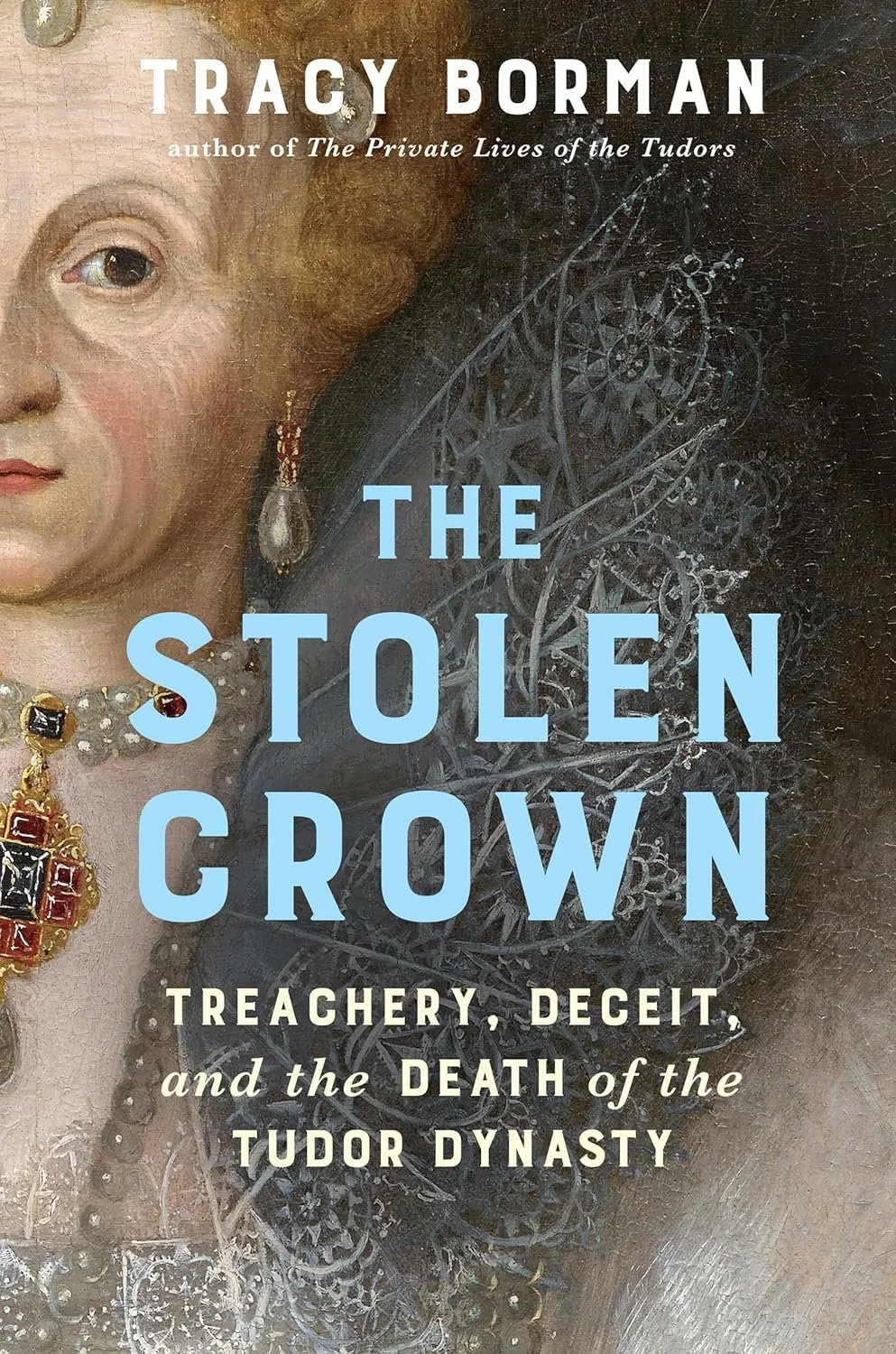The Stolen Crown by Tracy Borman
/The Stolen Crown: Treachery, Deceit, and the Death of the Tudor Dynasty
By Tracy Borman
Atlantic Monthly Press 2025
For centuries, the world has believed that the transfer of power from Elizabeth Tudor to James Stuart ran smoothly, supported not only by Elizabeth’s councilors but even by Elizabeth herself. Her earliest biographer, William Camden, tells how the Queen on her deathbed finally broke her decades-long silence to designate James as her rightful successor. However, in 2003, enhanced imaging technology was used on Camden’s original draft to make previously censored passages readable, showing that the deathbed scene was a later fabrication, written at a time when the new king’s reign was looking “dangerously unstable” and needed this bit of propaganda to cement his rule.
Inspired by this discovery, Tracy Borman wrote The Stolen Crown, a timely and comprehensive analysis of the succession situation to show how James’s inheritance was far more uncertain than hindsight made it seem. Beginning with Elizabeth’s fundamental position, “[w]hen I am dead, they shall succeed that have the most right” (its pronouns fluid centuries before the rest of us caught up), Borman smoothly walks us through the complex legal arguments that mitigated James’s claim and how they changed through the years. She presents us with the full cast of claimants and the defects of their own claims, including Jane Grey’s sisters, Arbella Stuart, the Earl of Huntingdon, the Infanta Isabella of Spain, and even the proposition of a council that might ‘direct the public affairs of the realm.’ Notably, Borman dives deep into the significant source material, including the huge trove of letters exchanged over the years between Elizabeth and James which suggest that Elizabeth did secretly favor his claim or expect it to succeed. While their relationship began to deteriorate in the 1590s, due to James’ impatience and increasing paranoia that he would be frozen out, Borman points specifically to a letter Elizabeth wrote in 1593. “The inference was clear,” Borman writes, “the hundreds of hours she had spent ‘scribbling’ her letters of advice to him over the past two decades had all been aimed at safeguarding his position, not only as King of Scots but as a future King of England.”
Still, any decision as to who had the “most right” would depend on who could be expected to carry the day at the time of Elizabeth’s death; this decision itself would rely on religious, misogynistic, and practical considerations. By the end of Elizabeth’s reign, her key advisors appear to have secretly decided that this could only be James: while his claim might suffer from his Scottish birth, Arbella Stuart’s claim faltered from her gender and mental instability and William Seymour’s by the adjudicated illegitimacy of his grandparent’s marriage. Thus, during the last two years of Elizabeth’s life, Robert Cecil, Secretary of State and Lord Privy Seal, worked tirelessly with several others on the Council to “remove, or at last reduce, the obstacles that stood in [James’s] way.” Indeed, Cecil was one of the two sources of the original lie about Elizabeth’s deathbed designation that ensured James’s accession. As Borman writes: “What, in the end, had given James the edge had not been the quality of his royal blood or the advantage of his gender but a small minority of English statesmen working assiduously on his behalf.”
Was this theft or just careful management? Either way, the story is as engaging as its analysis is insightful. Tracy Borman’s prose is elegant and commanding (no surprise there: she is chief historian of Historic Royal Palaces and chancellor and professor of Tudor history at Lincoln Bishop University). This latest offering in an impressive catalogue of wonderful non-fiction (and fiction) books is an absolute delight.
Janet Wertman is the author of the Seymour Saga trilogy. Her latest work of Tudor historical fiction is “Nothing Proved,” the first installment in her Regina trilogy.
